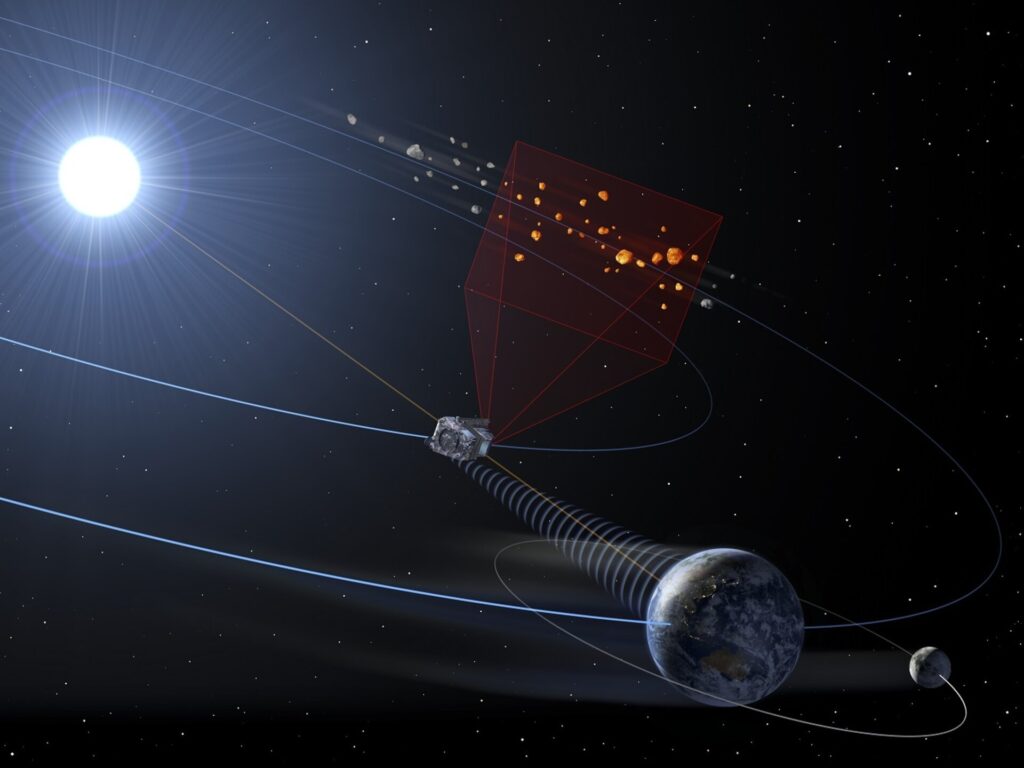
PARIS – Asteroid 2024 YR4, once feared to be on a collision course with Earth, now poses a potential threat to the moon. The European Space Agency (ESA) has revealed that the asteroid has a 4% chance of striking the lunar surface on December 22, 2032.
Immediate Impact
The NEOMIR orbiting observatory, designed to detect asteroids approaching from the sun’s direction, is expected to play a crucial role in monitoring such celestial threats. Positioned between the sun and Earth, NEOMIR will utilize a high-performance infrared detector to identify near-Earth objects over 20 meters in diameter, providing at least three weeks’ advance notice of potential impacts.
4% chance of asteroid 2024 YR4 impacting the moon on December 22, 2032.
Key Details Emerge
Asteroid 2024 YR4 was discovered on December 27, 2024, by the ATLAS telescope in Chile. Initial calculations suggested a small chance of Earth impact in 2032, which has since been ruled out. However, the possibility of a lunar collision remains, with the probability stabilizing until the asteroid returns to view in mid-2028.
Measuring between 53 and 67 meters in diameter, an asteroid of this size could cause significant damage, equivalent to leveling a city if it were to impact Earth.
By the Numbers
- 53 to 67 meters: Estimated diameter of 2024 YR4
- 3%: Initial probability of Earth impact
- 96%: Chance the asteroid will not hit the moon
What Comes Next
The asteroid’s trajectory will remain uncertain until new observations can be made in June 2028. At that time, astronomers will reassess its path and determine the likelihood of a lunar impact with greater accuracy.
“A lunar impact remains unlikely,” said Richard Moissl, Head of ESA’s Planetary Defense Office. “The impact would likely be visible from Earth, creating a valuable opportunity for scientific observation and analysis.”
Background Context
The discovery of 2024 YR4 highlights the importance of early detection systems. The asteroid was initially missed because it approached from the day side of the Earth, a region obscured by the sun’s brightness. This blind spot was notably demonstrated by the Chelyabinsk meteor in 2013, which caused widespread damage in Russia.
NEOMIR aims to fill this detection gap by using infrared technology to identify asteroids hidden by sunlight. This advancement is expected to significantly enhance planetary defense capabilities.
Expert Analysis
Richard Moissl emphasized the importance of NEOMIR, stating, “Simulations show that NEOMIR would have detected 2024 YR4 a month earlier than ground-based telescopes, allowing for a more detailed assessment of its trajectory and size.”
Regional Implications
As interest in lunar exploration and habitation grows, the potential for asteroid impacts on the moon becomes a significant concern. Monitoring space for objects that could threaten lunar infrastructure is increasingly vital as humanity seeks to establish a long-term presence on the moon.
Timeline of Events
- December 27, 2024: Discovery of asteroid 2024 YR4
- March 2025: Earth impact ruled out
- June 2028: Next opportunity for observation
- December 22, 2032: Potential lunar impact date
The ongoing development of ESA’s planetary defense initiatives underscores the critical need for preparedness against potential asteroid threats. As technology advances, the ability to predict and mitigate such risks will be crucial to safeguarding both Earth and its natural satellite.






